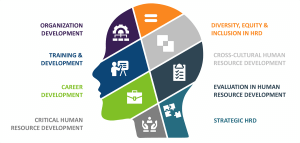
Businesses in Asia Pacific overwhelmed by real-time data RSS Share
79% believe their brands should be more active on digital platforms yet 70% are unable to integrate multiple data sources such as social media, blogs, website traffic and search data – leaving them unsure what action to take
Businesses have never had so much data at their disposal but new research from TNS reveals that many are failing to use the information to help them make informed decisions. According to the TNS Marketing Monitor, a survey of over 2,700 marketing professionals across Asia Pacific, the volume and variety of data is obscuring valuable insights and making it harder for businesses to use it to their advantage
Businesses across the region are investing more in data-driven digital platforms and tracking systems to help them understand the challenging online landscape. Much of this data comes into the marketing department, with one in three marketers (34%) now managing real-time data as part of their role.
However, almost three quarters (70%) of marketers admit that they find it difficult to integrate data from different sources. With so much data available, marketers know they should be able to make decisions in real-time, but many are struggling to integrate traditional and digital measurements.
According to Nitin Nishandar, Managing Director of Brand & Communications, Asia Pacific, TNS, many South Korean businesses are overwhelmed by the volume of data. “Instead of being daunted by the challenge, marketers should see this as a golden opportunity to leverage the data to build a fast-paced, real-time marketing function.”
Because of the difficulties with real-time data, many marketers are falling back on traditional measurements. According to the survey, sales uplift metrics are still used as the number one way of evaluating the success of marketing campaigns. Despite their importance, these metrics are retrospective and do not empower businesses to track the ongoing reception of campaigns, react to live issues and make the changes that could nudge their marketing activity in a more favourable direction.
In addition, current market research methods are not helping marketers make quick and informed decisions. Analysis is viewed as ‘not actionable enough’ (68%) and ‘too slow’ (66%) to be of use, according to the marketers surveyed across the region.
Nitin Nishandar, Managing Director of Brand & Communications, Asia Pacific, TNS, explains: “The difficulties in extracting valuable insight from data means that marketers have a rear-view mirror approach, only understanding their performance and brand equity weeks or even months afterwards. Real-time data needs to deliver real-time value -otherwise it’s just distracting noise.”
Some countries are further ahead than others in integrating insights from digital channels. Singapore is leading the way, with 55% of marketers using social media monitoring when making marketing decisions, with Malaysia closely behind at 50%. Despite having some of the most advanced social media platforms in the world, China is lagging behind, with only one in three (30%) monitoring this data.
Countries using social media monitoring to inform decisions
Singapore 55%
Malaysia 50%
Thailand 46%
South Korea 45%
Indonesia 43%
Australia 43%
India 42%
China – 30%
Tapping into digital data has the potential to unlock future opportunities for those businesses that can leverage it. The survey highlighted that two out of three marketers (67%) are frustrated with the lack of predictive insight provided by traditional market research. New methods are showing that digital data, when integrated correctly, can not only help make real-time decisions, but can also predict brand equity.
Nitin continues: “As the pace of change accelerates across the region, we need to start using data to gaze into the future, not just measure the here and now. Tracking social and search data to form the basis of a predictive spine delivers insight months ahead of survey data or sales figures. This gives marketers the power to anticipate changes to brand equity in time to actually do something about it. In such a volatile environment, having a telescopic view into the future is an invaluable competitive advantage, and one that businesses can’t afford to overlook.”
























